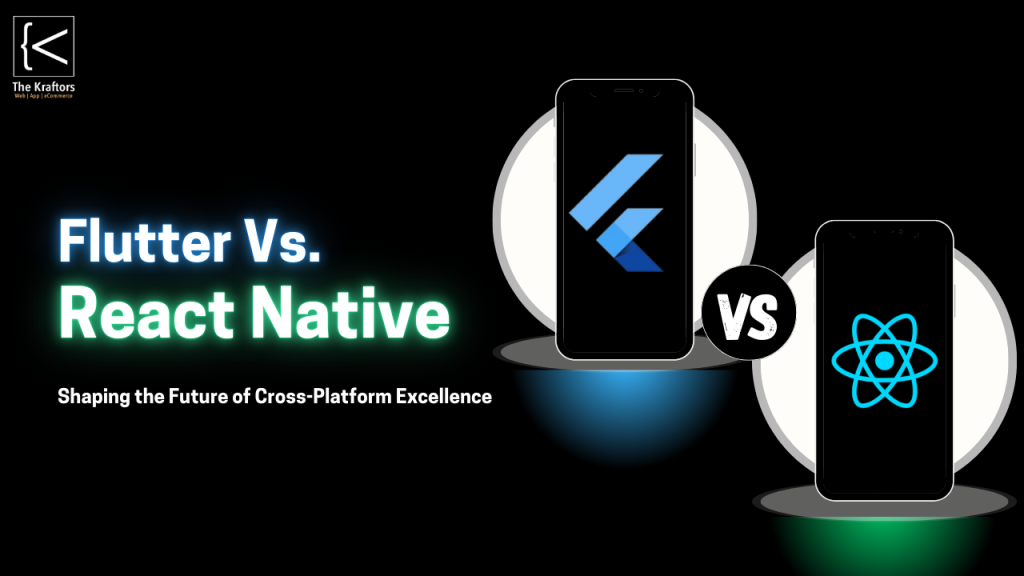What is React Native?
Meta Platforms has developed React Native, an open-source UI system used for creating Android, Android TV, macOS, and UWP applications. Facebook, Microsoft, Shopify, and Oculus uses React Native for Android and iOS applications and virtual reality applications.
What is Flutter?
Google’s Flutter is an open-source SDK that enables the creation of unified packages for mobile, internet, and computing devices. Using the Dart programming language, offering pre-designed widgets and tools.
Flutter Vs. React Native
Advantages and Disadvantages of Flutter and React Native
Advantages of Flutter
1. Quick Development
Flutter’s quick development iteration empowers builders to look at real-time app modifications even as adjusting the code. So, this usefulness particularly improves the promptness and adequacy of the utility development system.
2. Exceptional Customer Interfaces
Flutter offers customizable widgets for creating stylish, user-friendly interfaces, with a strong focus on layout and visual appeal. And making it an ideal choice for app development tasks requiring visual appeal.
3. Higher Performance
Flutter gives brief and consistent animation and transitions, custom-made to paintings productively on more pro gadgets. The focus is on optimizing execution, presenting an attractive opportunity for flexible packages and expanding the client base.
4. Cross-platform development
Flutter not only encourages versatile app development but also extends its page to improved desktop apps on the web. Making it a handy mechanism for creating applications which need to run consistently on the platform of various types.
5. Open sources
Flutter is a free open source system, which makes it available to a wide extent of engineers and companies. Working with the broader group of engineers and clients with System. Makes a distinction in guaranteeing it proceeds to advance and develop in its capabilities.
Disadvantages of Flutter
1. Restricted Third-Party Libraries
Flutter offers a growing range of bundles and plugins. But its current state and limited third-party libraries make it less suitable for third-party systems like Respond Native.
2. Length of study
The Dart programming language used by Flutter can be a challenge for some engineers. And a high level of learning for those who don’t already know OOPs concept.
3. Limited corporate adoption
Flutter, despite its significant role in the development community, is largely untapped. Leaving organizations with limited design options compared to other frameworks.
Advantages of React Native
1. Cross-platform development: React Native allows engineers to create usable codebases for iOS and Android applications. Dramatically reducing development time and effort.
2. React native components are compiled to local code, offering superior execution compared to internal WebViews running crossover applications. Major communities and ecosystems:
3. Strong Community Page: A large team of engineers contribute endless libraries, tools, and plugins to an endless ecosystem. Making it easy to find programs and support.
4. Component-Based Design: Response Native uses stand-alone engineering. That enabling engineers to reuse components in different parts of the application or indeed in other projects.
5. Ongoing updates: Being sponsored by Facebook provides incremental support, upgrades and enhancements to the system. To keep it relevant and in line with the latest technology.
6. Extensive plugin bolster: React Native creates advanced third-party plugins. These allowing designers to easily add utilities like maps, installment portals, and more
7. Low cost: Since a single codebase can be used for multiple platforms. It reduces the resources needed for development, leading to cost savings.
8. Continuous improvement: Active commitments from the design team provide steady progress and untapped milestones, assuring rapid system improvement.
Disadvantages of React Native
- Business Restrictions: Not as fast as pure native apps. While React Native offers near-native performance. It can still fall short compared to native apps like Swift for iOS or Kotlin for Android. Especially for apps that require a lot of performance.
- Dependencies on third-party modules: React Native doesn’t have a native module for every feature you need. Developers may need to create custom native modules or rely on third-party libraries. Which can cause compatibility issues and increased development time.
- Debugging Issues: Debugging React native apps can be more difficult compared to debugging native apps. Especially when dealing with issues embedded in JavaScript and native code
- Inconsistent behavior: Despite the promise of cross-platform, developers often have to deal with platform-specific quirks and problems. This could lead to new rules and maintenance efforts to ensure consistent behavior between iOS and Android.
- Knowledge of various technologies required: To effectively use React Native, developers must be familiar with JavaScript, React, native development environments for iOS and Android. For some developers, this can be a steep learning curve.
Future of Flutter and React Native
A few wrong decisions can be made as Flutter is fairly a passing trend without a long term blur absent. In any case, as the Stack Overflow survey showed. It has a strong presence among engineers and is slowly being acquired by companies.
For example, Flutter’s ubiquity increased by means of 9% from 2019-2020 at the same time. As React Native’s ubiquity stays strong. Based on modern-day plans, Flutter will probably surpass React Native in reputation by 2024 as properly.
In summary, there are pros and cons to both methods. Give you a choice to make contributions. We’ve put together a contrast chart of the key assets explored in this article:
In Conclusion: Which Framework to Choose?
Overall, in case you pick among Flutter and React Native for move-platform mobile app development. Select Flutter due to its robust logic and ability to handle more than one monitor, fast overall performance, and protection improved in comparison to React Native so. There is a way you may do it.
Our involvement in Flutter improvement allows us to help you build the app of your dreams.
Interested?, please touch us to speak about your venture for an appraisal.
Also, Explore
Cubit in Flutter
Cubit is a state management. It is a subset of the bloc package. That does not given credit to events and instead uses methods to emit new states. This class stores an observable state using streams, making it easy to understand without requiring reactive programming knowledge.
Read the full article here: https://thekraftors.com/blog/cubit-in-flutter/(opens in a new tab)



I like reading through an aricle that can make men and women think.
Also, thank you for allowing for me too comment! https://Evolution.Org.ua
Thank you for your kind words! We’re glad you found the article thought-provoking and enjoyed reading it. We appreciate you taking the time to share your feedback—it motivates us to keep creating content that sparks meaningful conversations. Feel free to share any additional thoughts or topics you’d like us to cover!